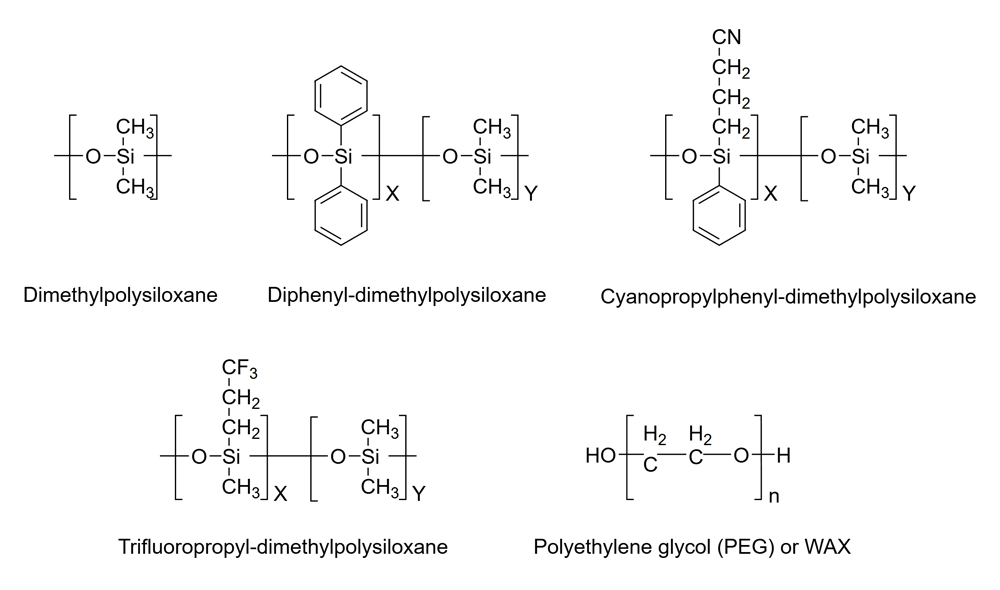A greater film thickness means that more stationary phase is present, which leads to longer retention. Columns with a greater film thickness are therefore used in particular for analytes that elute very quickly or are highly volatile. These include solvents or certain gases. Another effect is that the temperature at which elution is observed also increases. A thicker film provides the same or longer retention at a higher temperature. Thinner films, on the other hand, reduce retention and are therefore used for strongly retarding analytes. In addition, the temperature required for elution is reduced. As a result, the same or earlier elution of the analytes can be observed at lower temperatures. Due to these effects, columns with a thick film are used for very volatile compounds and gases. Columns with a thin film are used for high-boiling analytes.
However, a thicker film is associated with greater column bleed. As a result, late eluting peaks can be overlaid by column bleed. Therefore, the temperature limit is also lower with thicker films compared to thinner films.
The capillary walls are better shielded by a thicker film, which makes a column more inert. For this reason, peaktailing can often be reduced or avoided with a thicker film.
A thicker film also shows a higher capacity compared to thinner films. When analytes are present in large quantities in a sample, a thin film often shows very broad peaks. As a result, these peaks can overlap others. Here, the use of a thicker film can lead to narrower peaks and better separation.
As the film thickness naturally also depends on the internal diameter of the column, there are a few recommendations. For columns with an inner diameter of 0.18-0.32mm, 0.18-0.25µm thick films are used as standard. Columns with an inner diameter of 0.45-0.53mm are often used with film thicknesses of 0.8-1.5µm. Thicker films are used for volatile compounds, are more inert and have larger sample capacities. However, column bleed is greater and the temperature limits are lower. Thinner films are used for high-boiling analytes, are less inert and have a lower sample capacity. However, the temperature limit is generally higher and only minimal column bleed can be observed.
